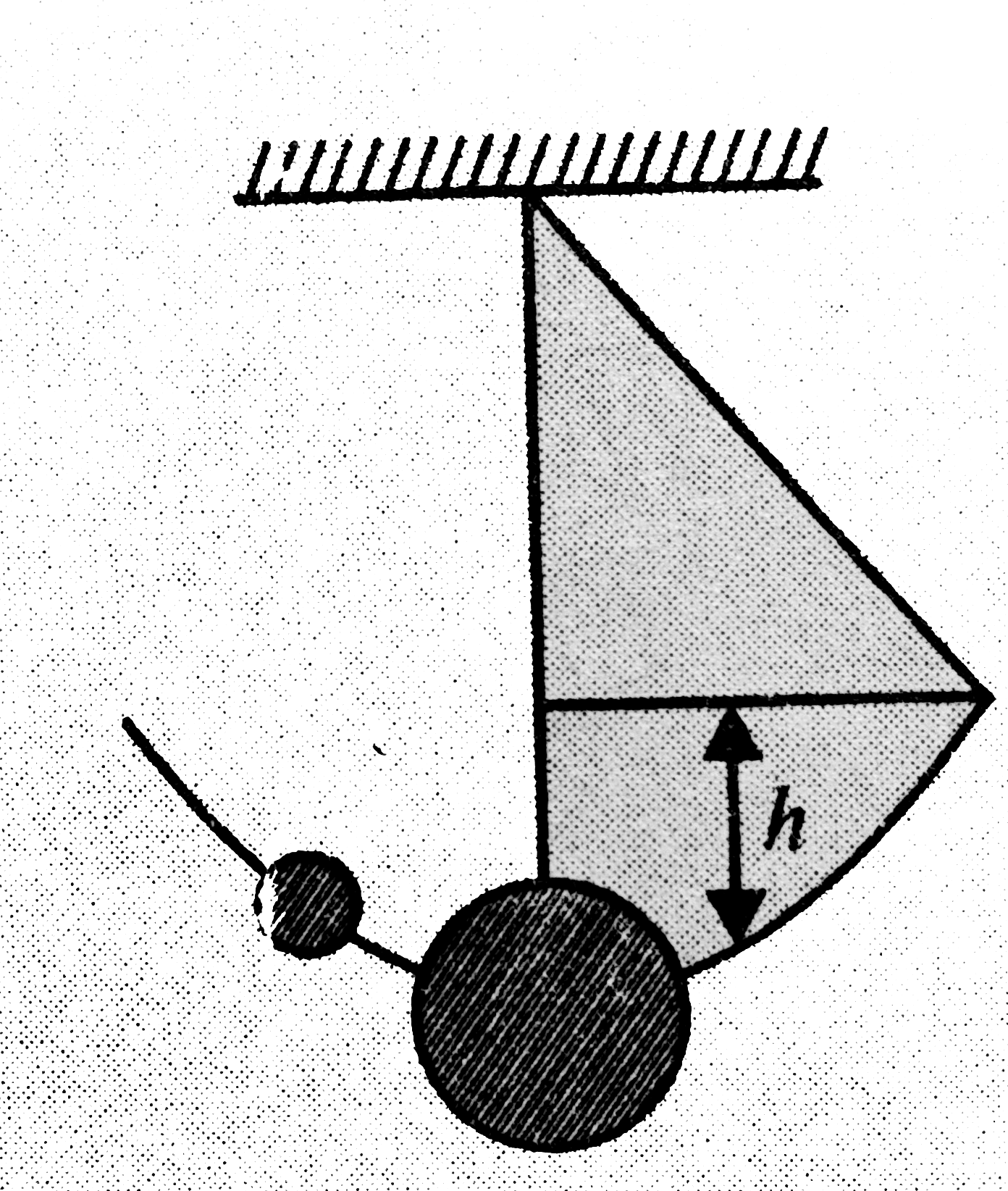A small block of super dense material has mass 2×1024kg. It is at a height h<<R. It falls towards the earth.Find its speed when it is at a height h2
√2gh3
√3gh4
√3gh5
√gh2
The correct Answer is:B
To solve the problem of finding the speed of a small block of super dense material when it is at a height h2 from the Earth's surface, we can use the principle of conservation of energy. Here's a step-by-step breakdown of the solution:
Step 1: Understand the Problem
We have a block of mass mb=2×1024kg falling from a height h (where h≪R, with R being the radius of the Earth). We need to find its speed when it reaches a height h2.
Step 2: Apply Conservation of Energy
The total mechanical energy (potential + kinetic) at the initial height h should equal the total mechanical energy at the height h2.
1. Initial Potential Energy (PE_initial) at height h:
PEinitial=−GMmbR+h
where G is the gravitational constant and M is the mass of the Earth.
2. Final Potential Energy (PE_final) at height h2:
PEfinal=−GMmbR+h2
3. Kinetic Energy (KE) at height h2:
KE=12mbv2
Step 3: Set Up the Energy Conservation Equation
Using the conservation of energy:
PEinitial=PEfinal+KE
Substituting the expressions we have:
−GMmbR+h=−GMmbR+h2+12mbv2
Step 4: Simplify the Equation
1. Rearranging the equation gives:
12mbv2=−GMmbR+h+GMmbR+h2
2. Factor out GMmb:
12mbv2=GMmb⎛⎝1R+h2−1R+h⎞⎠
3. Cancel mb from both sides:
12v2=GM⎛⎝1R+h2−1R+h⎞⎠
Step 5: Calculate the Difference in Potential
1. Finding a common denominator:
1R+h2−1R+h=(R+h)−(R+h2)(R+h)(R+h2)=h2(R+h)(R+h2)
2. Substitute back into the equation:
12v2=GM⋅h2(R+h)(R+h2)
Step 6: Solve for v
1. Multiply both sides by 2:
v2=GMh(R+h)(R+h2)
2. Take the square root:
v=
⎷GMh(R+h)(R+h2)
Step 7: Final Expression
Since h≪R, we can approximate:
v≈√GMhR2=√gh
where g=GMR2 is the acceleration due to gravity.
Conclusion
Thus, the speed of the block when it reaches a height h2 is approximately:
v=√gh
We have a block of mass mb=2×1024kg falling from a height h (where h≪R, with R being the radius of the Earth). We need to find its speed when it reaches a height h2.
The total mechanical energy (potential + kinetic) at the initial height h should equal the total mechanical energy at the height h2.
PEinitial=−GMmbR+h
where G is the gravitational constant and M is the mass of the Earth.
PEfinal=−GMmbR+h2
KE=12mbv2
Using the conservation of energy:
PEinitial=PEfinal+KE
Substituting the expressions we have:
−GMmbR+h=−GMmbR+h2+12mbv2
1. Rearranging the equation gives:
12mbv2=−GMmbR+h+GMmbR+h2
12mbv2=GMmb⎛⎝1R+h2−1R+h⎞⎠
12v2=GM⎛⎝1R+h2−1R+h⎞⎠
1. Finding a common denominator:
1R+h2−1R+h=(R+h)−(R+h2)(R+h)(R+h2)=h2(R+h)(R+h2)
12v2=GM⋅h2(R+h)(R+h2)
1. Multiply both sides by 2:
v2=GMh(R+h)(R+h2)
v=
⎷GMh(R+h)(R+h2)
Since h≪R, we can approximate:
v≈√GMhR2=√gh
where g=GMR2 is the acceleration due to gravity.
Thus, the speed of the block when it reaches a height h2 is approximately:
v=√gh
Similar Questions
A small body of superdense material, whose mass is twice the mass of the earth but whose size is very small compared to the size of the earth, starts form rest at a height H<<R above the earth's surface, and reaches the earth's surface in time t. then t is equal to
View SolutionA small block of superdense material has a mass M3 , where M is the mass of earth . It is released from rest from a height h ( h << radius of earth) from the surface of earth . The speed of the block at a height h2 is
View SolutionA satellite of mass 1000kg is supposed to orbit the earth at a height of 2000km above the earth's surface. Find a. its speed in the orbit b. its kinetic energy. c. The potential energy of the earth-satellite system and d. its time period. Mass of the earth =6×1024kg.
View SolutionA satellite of mass 1000 kg is supposed to orbit the earth at a height of 2000 km above the earth's surface. Find a). its speed in the orbit b). its kinetic energy. c). The potential energy of the earth satelilte system and d). its time period. Mass of the earth =6×1024kg.
View SolutionA pendulum bob of mass 10−2kg is raised to a height 5×10−2 m and then released. At the bottom of its swing, it picks up a mass 10−3kg. To what height will the combined mass rise?

View SolutionA body of mass 10 kg moving at a height of 2 m, with uniform speed of 2 m/s. Its total energy is
View SolutionWhat is the change in potential energy of a body of mass 10kg when it is taken to a height of 2R from the earth's surface ? G given
View SolutionA body has a weight 72 N. When it is taken to a height h=R= radius of earth, it would weight
View SolutionTotal energy of a body at rest at a height h from a point of reference is 75 J. What is its kinetic energy as it falls through a height h/2 ?
View SolutionCalculate the angular momentum and rotational kinetic energy of the earth about its own axis. Given mass of the earth is 6×1024 kg and its radius =6.4×103 km. [Moment of inertia of the earth about its axis of rotation is 25mr2]
View Solution
